WHEN AND WHY DO WE TRIM BIRDS’ BEAKS AND CLAWS?
Birds’ beaks and claws grow like our finger nails. However, normal, healthy birds wear their beaks and claws down and keep them in trim through their everyday activities of climbing, chewing, foraging and eating within their environment. That is why it is very important to provide pet birds with plenty of natural leafy branches from Australian native trees to keep their beaks and claws in shape.
Healthy birds don’t need their beaks trimmed. Whenever birds needing beak trims, are presented at my surgery it is usually the result of an underlying problem. Trauma, disease, dietary deficiencies or genetic problems are some of the reasons for beaks growing too long. It is necessary to investigate the underlying cause of overgrown beaks, rather than just simply trimming the beak.
Trauma to the beak can result in crooked or abnormal growth. Breaks, knocks or bites to the bird’s beak can cause growth and alignment problems. If the top beak is broken or damaged, the bottom beak will grow longer because it has nothing to wear against. The beak is a precision instrument and any damage to the natural alignment of top and bottom beak will result in abnormal wear and growth problems.
Genetic problems such as “scissor beak”, where the upper beak and lower beak cross over making it impossible for one to wear or grind against the other, also result in overgrowth. This can also be a developmental/growth problem. A “pug” beak is another genetic cause of overgrown beaks. In this case the bird is hatched with an overshot lower beak, which needs continual cutting as it cannot wear or grind against the upper beak.
Vitamin and mineral deficiency can also contribute to beak growth problems. The beak can become brittle and flaky as well as becoming overgrown. Birds with a high fat diet become obese and develop fatty liver syndrome. Chronic fatty liver disease is another common cause of long beaks. In these cases it is necessary to correct the dietary imbalances and to treat the fatty liver disease as well as trimming the overgrown beak. Birds with fatty liver disease have problems with blood clotting and the beak will bleed excessively if the “quick” is damaged during trimming.
Infections can also result in deformed or overgrown beaks. Scaly face mite is a common cause of overgrown, misshapen beaks, especially in budgies and canaries. Scaly face mite can be simply treated by your avian veterinarian. Viral diseases such as Psittacine Circovirus and Polyoma-virus also cause beak growth problems. Blood tests are used to diagnose viral problems. However, there is no treatment for these viruses and they are very contagious.
As you can see, the need for a beak trim is a warning sign that something is “not right” with your bird. Your avian veterinarian is the best person to investigate the reasons why the beak is overgrown. Sometimes the answer can be as simple as providing more “browse” (green, leafy, branches from Australian native trees) for the birds to chew on, but more often than not there is a need to investigate further to get to the bottom of the problem.
Similarly, a healthy bird’s claws should not need trimming. No-one trims the wild bird’s beaks and claws. If a pet bird is provided with rough bark perches from Australian native trees, their claws should wear naturally. The perches need to be wide enough for the bird’s foot to spread evenly over the top of the perch rather than being tightly curled round a too narrow perch.
However, trauma, infections and dietary imbalances can also result in birds having overgrown claws. Birds with feet damaged from fractures, arthritis, or infections such as “bumble-foot” have difficulty with wearing their claws down naturally. These birds often need to visit their avian veterinarian in order to trim the claws on damaged feet.
Birds with fatty liver syndrome commonly are presented with overgrown claws as well as with overgrown beaks. In these cases, the veterinarian needs to be aware of the fact that fatty liver birds bleed easily and care must be taken not to cut the quick when trimming the claws or have cautery readily available.
When trimming beaks and claws, I use a cordless, hand drill to grind back the excess length. This tool gives a rounded finish to the claws and beak rather than the “crushing effect” that occurs from using nail clippers. The hand drill also allows for finer detail when remodelling a beak.
If you think that your bird’s beak or claws need a trim, contact your avian veterinarian who will examine your bird and find out why the overgrowth is occurring.
(Some commonly available, safe, Australian native trees for birds to chew on, include: Wattle, Gum, Melaleuca, Bottlebrush, Paper Bark, Tee Tree, Banksia, She Oak, Lillypilly, Grevillia). Check with your local Nursery to help you identify these varieties.
FAQs
Healthy birds don’t need their beaks trimmed, so an overgrown beak is usually the result of an underlying issue such as an imbalanced diet, disease, injury or genetics. If your pet bird has an overgrown beak, be sure to get them to an avian pet hospital for a check up.
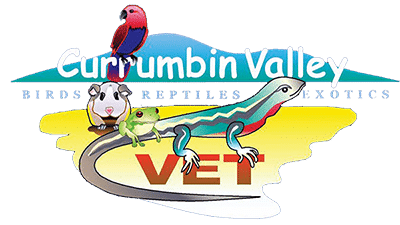



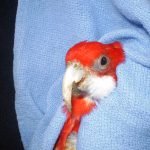
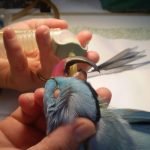
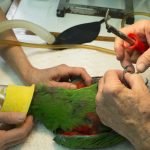
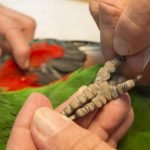

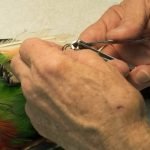

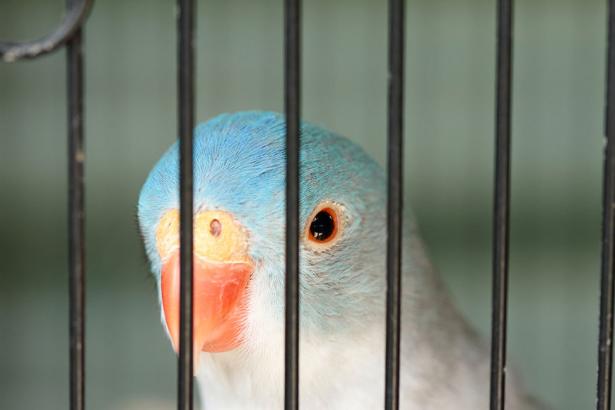
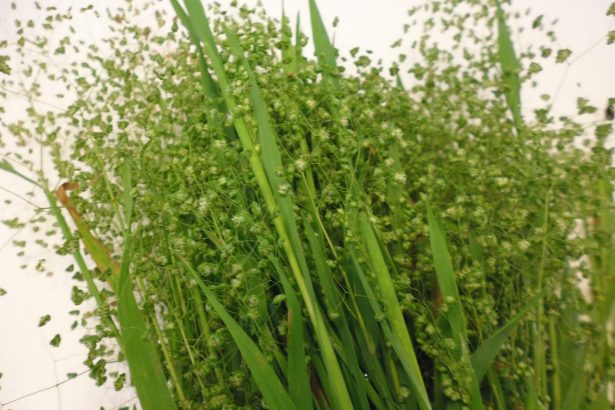

Hi.
I have a galah, this one rescued from a bad owner who left bird with a 1.5 cm steel perch. Becuase he has a crooked claw and aftet 7yrs is getting better as we have a padded perch with towling large enough for him to be happy. He is out most of the time and loves sitting on me. Sometimes I take off about .05mm from sharpest claw. I know you say for my comfort, but this is only about every 3 mths. I suffer until unable to handle. He has a memory that now he loves me. His diet I mix with his fav silver sunflower mixed with the wild bitd mix as well as cooked tice and plain pasta. Also I clip his right wing about 1/3 rd so he doesnt fly into the road when I go with him on walk. Plus he travels all around Australia in a cage in our car. He has permission to stay in 36 motels as we lay a sheet on floor and leave spotless. I love him as have with all our past pets. He now seems very happy and loves being out all day am I doing any thing wrong re claws and diet and clipping. Many thanks Peter.
We have a cockatoo that has been visiting our yard, He/she has a broken top beak and an overgrown lower beak, He is coming in to eat wheat that we’ve put out for galahs and wild doves to eat.
It looks as though he flown beak first into something. But with the lower being as over grown as it is he is having trouble eating – he is able to scoop food up in the lower jaw but its unable to chew it. Today I cooked him up a bit of steamed rice is this good for cockatoo’s or not? He seemed to enjoy it.
What does it usually cost for a lower beak trim? He looks healthy otherwise or could it be possible that he has beak and feather disease do beaks go bad before feathers in that case.
He is fully feathered.
Hello there!
Just wanted to check how much a beak and nail trim costs? I have a conure. I need to get him some natural branches for his cage as he currently only has your standard wooden perch.